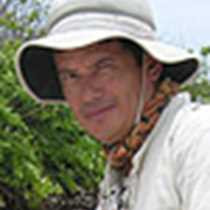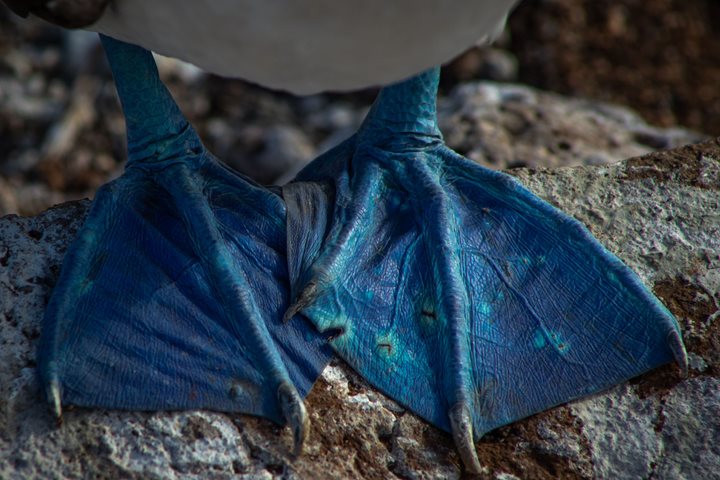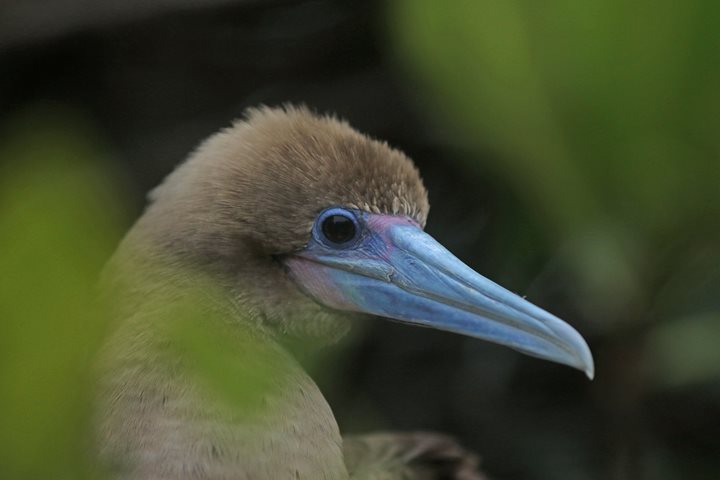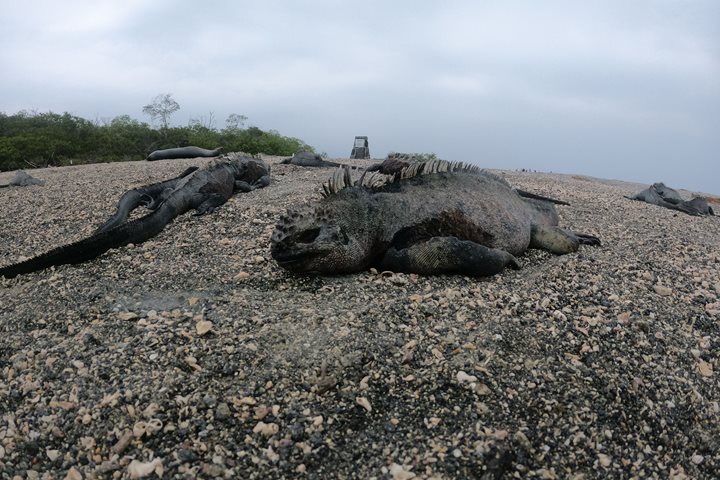Española, or Hood Island, is flat with no fresh water and very dry. It is considered the oldest in the archipelago and geologically is dying. But, on the other hand, there are a great number of endemic and native creatures found everywhere on this island, like nowhere else.
Early in the morning we started our day kayaking along the coast of Española, observing a lot of sea birds such as blue footed boobies and swallow tailed gulls. While along the east, the sun was just coming out and illuminating the ocean and the cliffs with a beautiful orange color.
After breakfast our guests had plenty of activities to enjoy; some of us went deep water snorkeling with playful sea lions, sea turtles and tropical fish such as king angel fish, surgeon fish and puffer fish. Others chose to try Gardner Beach as a place to learn how to snorkel for the first time. We observed more than 300 sea lions laid down on the white sand, some of them feeding their pups and others just resting after a long journey trying to obtain food. The curious Española mockingbirds delighted our guests with their fearless behavior, producing unmistakable calls while digging small holes on the beach looking for food.
After a short navigation and a delightful Ecuadorian lunch, we dropped anchor in front of Punta Suarez.A beach landing where your feet will get wet We landed on the small dock where a great number of female sea lions fed their pups, while inland plenty of endemic species were seen at this site, not only those endemic to Galápagos but also endemic to Española Island. We observed many Nazca boobies nesting on the ground, protecting their eggs against the inquisitive mockingbird, which tried to peck and eat them. Lava lizards, ground and warbler finches, sea lions and all the life you could ever imagine in just one visitor site, a real explosion of life.
This was an excellent introduction to the Galapagos and its beautiful attractions and real wildlife. The innocent creatures captivated our attention and love for this magical place.







